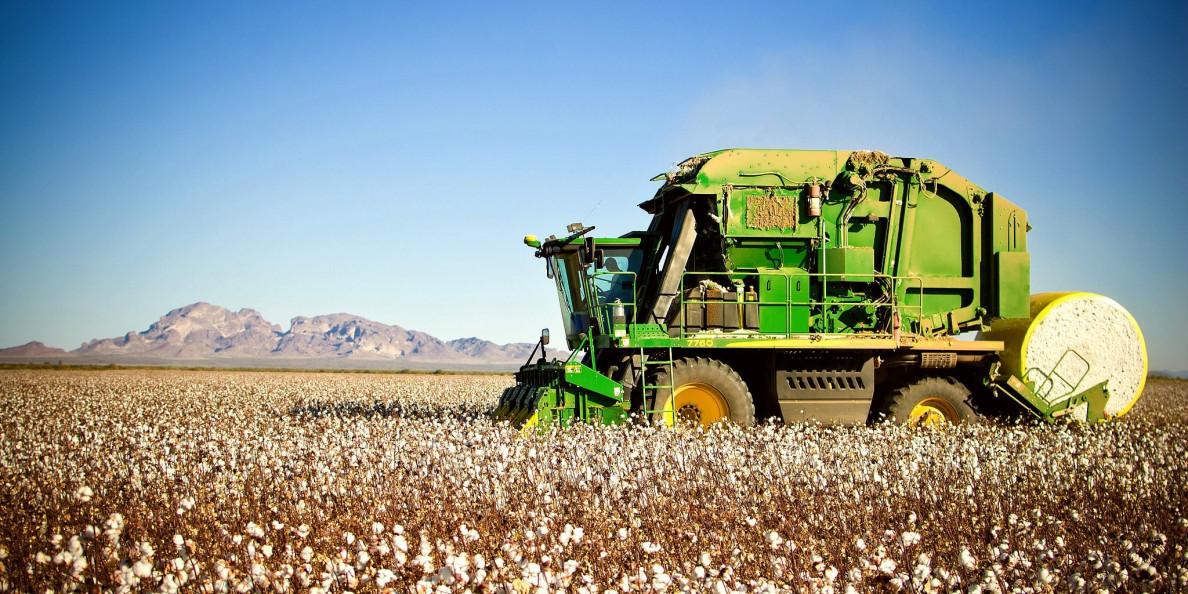As cotton prices remain strong, overall cotton acres are expected to climb in 2018. The National Cotton Council (NCC) released its planting intentions survey earlier this year, indicating a 3.7 percent increase in cotton acres across the country.
It’s the southwest that could see the biggest jump, with NCC expecting acres to jump 5.7 percent. That’s accounting for a 55 percent surge in Kansas and a 21 percent jump in Oklahoma.
However, as dryness expands, it’s weighing on producers as they finish making their planting decisions this year.
“It’s been immensely dry,” said Greg Black, who farms with his family in Washita County, Oklahoma.
The latest drought monitor paints the picture clearly, with 61 percent of the Oklahoma suffering from dry conditions.
The worst sits in the western portion of the state, where nearly 34 percent of the state is seeing extreme drought, and more than 8 percent is experiencing exceptional drought—the most severe level of dryness on the U.S. Drought Monitor.
The bleak moisture situation is hindering Black and his family from planting more cotton this year.
“We’re not going to increase acres from last year,” said Black. “We’re going to keep the same amount of acres, and that way we feel like we can limit our risks there.”
They aren’t upping their cotton acres in 2018, but it’s still more than the family planted just two years ago. In 2017, the Blacks decided to plant cotton for the first time since the 1990s.
“With the changing in varieties, it definitely has made it where we felt like it was something we had to look at on the farm to maybe be profitable,” said Black.
Planting cotton was a bet the Blacks are glad they made last year, even deciding after wheat harvest to plant double crop cotton acres last year.
“We had some produce a little over 1,100 pounds, and we were pretty excited about that,” said Black. “We had success, but that probably wouldn’t happen twice.”
Black says double crop cotton is a big gamble in this area of the country, and considering that cotton is a high-input crop, it’s a gamble the family isn’t willing to take in 2018.
Black’s family is sticking to the same amount of cotton they planted last year, but more cotton is anticipated across all of Oklahoma.
A seed salesman around Enid, Oklahoma. told U.S. Farm Report that acres in their area saw a 50 percent spike last year. And based on seed sales, he expects another 10 to 15 percent increase this year.
It’s that theme Black says could play out across the state.
“When we look at acres, and what we had last year, I think we could see another 150, maybe 200,000 acres possibly,” said Black.
More acres, means more bales to run through gins, and that comes at a time when gins haven’t even finished chewing through the record crop they witnessed in 2017.
“They’re still ginning cotton around here,” said Black. “There’s a chance that we could still be ginning cotton in June, and as we get into planting season. There’s even talks of gins running until July in that part of the country.”
It’s infrastructure that’s an issue for Oklahoma cotton farmers. Some producers are forced to truck their cotton as much as 200 miles to get it ginned, however with front month-cotton futures hovering above 80 cents per pound, it’s worth the extra time and costs.
Πηγή: Agweb


